Economy
Climate Panic Behind Energy Crisis

Climate activists, including members of Extinction Rebellion, participate in a demonstration in front of the Thurgood Marshall US Courthouse on June 30, 2022 in New York City. (Photo by Spencer Platt/Getty Images)
My testimony to U.S. Congress
I was delighted to be invited to testify before the United States Congress for the seventh time in two years. Below are my oral remarks. All references can be found in my full testimony, which draws on much of what I have published here on Substack over the last 18 months. To read my full testimony, please click here.
Good morning Chairwoman Maloney, Environment Subcommittee Chairman Khanna, and Ranking Member Comer, and members of the Committee. I am grateful to you for inviting my testimony.
I share this committee’s concern with climate change and misinformation. It is for that reason that I have, for more than 20 years, conducted energy analysis, worked as a journalist, and advocated for renewables, coal-to-natural gas switching, and nuclear power to reduce carbon emissions.
At the same time, I am deeply troubled by the way concern over climate change is being used to repress domestic energy production. The U.S. is failing to produce sufficient quantities of natural gas and oil for ourselves and our allies. The result is the worst energy crisis in 50 years, continuing inflation, and harm to workers and consumers in the U.S. and the Western world. Energy shortages are already resulting in rising social disorder and the toppling of governments, and they are about to get much worse.
We should do more to address climate change but in a framework that prioritizes energy abundance, reliability, and security. Climate change is real and we should seek to reduce carbon emissions. But it’s also the case that U.S. carbon emissions declined 22% between 2005 and 2020, global emissions were flat over the last decade, and weather-related disasters have declined since the beginning of this century. There is no scientific scenario for mass death from climate change. A far more immediate and dangerous threat is insufficient energy supplies due to U.S. government policies and actions aimed at reducing oil and gas production.
The Biden administration claims to be doing all it can to increase oil and natural gas production but it’s not. It has issued fewer leases for oil and gas production on federal lands than any other administration since World War II. It blocked the expansion of oil refining. It is using environmental regulations to reduce liquified natural gas production and exports. It has encouraged greater production by Venezuela, Saudi Arabia, and other OPEC nations, rather than in the U.S. And its representatives continue to emphasize that their goal is to end the use of fossil fuels, including the cleanest one, natural gas, thereby undermining private sector investment.
If this committee is truly concerned about corporate profits and misinformation, then it must approach the issue fairly. The big tech companies make larger profits than big oil but have for some reason not been called to account. Nor has there been any acknowledgement that the U.S. oil and gas industry effectively subsidized American consumers to the tune of $100 billion per year for most of the last 12 years, resulting in many bankruptcies and financial losses. As for misinformation about climate change and energy, it is rife on all sides, and I question whether the demands for censorship by big tech firms are being made in good faith, or are consistent with the rights protected by the First Amendment.
Efforts by the Biden administration and Congress to increase reliance on weather dependent renewable energies and electric vehicles (EVs) risk undermining American industries and helping China. China has more global market share of the production of renewables, EVs, and their material components than OPEC has over global oil production. It would be a grave error for the U.S. to sacrifice its hard-won energy security for dependence on China for energy. While I support the repatriation of those industries to the U.S., doing so will take decades, not years. Increased costs tied to higher U.S. labor and environmental standards could further impede their development. There are also significant underlying physical problems with renewables, stemming from their energy-dilute, material-intensive nature, that may not be surmountable. Already we have seen that their weather-dependence, large land requirements, and large material throughput result in renewables making electricity significantly more expensive everywhere they are deployed at scale.
The right path forward would increase oil and natural gas production in the short and medium terms, and increase nuclear production in the medium to long terms. The U.S. government is, by extending and expanding heavy subsidies for renewables, expanding control over energy markets, but without a clear vision for the role of oil, gas, and nuclear.
We should seek a significant expansion of natural gas and oil production, pipelines, and refineries to provide greater energy security for ourselves, and to produce in sufficient quantities for our allies. We should seek a significant expansion of nuclear power to increase energy abundance and security, produce hydrogen, and one day phase out the use of all fossil fuels. While the latter shouldn’t be our main focus, particularly now, radical decarbonization can and should be a medium- to long-term objective within the context of creating abundant, secure, and low-cost energy supplies to power our remarkable nation and civilization.
Business
Liberal’s green spending putting Canada on a road to ruin

Once upon a time, Canadians were known for our prudence and good sense to such an extent that even our Liberal Party wore the mantle of fiscal responsibility.
Whatever else you might want to say about the party in the era of Jean Chrétien and Paul Martin, it recognized the country’s dire financial situation — back when The Wall Street Journal was referring to Canada as “an honorary member of the Third World” — as a national crisis.
And we (remember, I proudly served as Member of Parliament in that party for 18 years) made many hard decisions with an eye towards cutting spending, paying down the debt, and getting the country back on its feet.
Thankfully we succeeded.
Unfortunately, since then the party has been hijacked by a group of reckless leftwing fanatics — Justin Trudeau and his lackeys — who have spent the past several years feeding what we built into the woodchipper.
Mark Carney’s finally released budget is the perfect illustration of that.
The budget is a 400 page monument to deficit delusion that raises spending to $644.4 billion over five years — including $141.4 billion in new spending — while revenues limp to $583.3 billion, yielding a record (non-pandemic) $78.3 billion shortfall, an increase of 116% from last year.
This isn’t policy; it’s plunder. Interest payments alone devour $55.6 billion this year, projected to hit $76.1 billion by 2029-30 — more than the entire defence budget and rising faster than healthcare transfers.
We can’t discount the possibility that this will lead to a downgrade of our credit rating, which will significantly increase the cost of borrowing and of doing business more generally.
Numbers this big start to feel very abstract. But think of it this way: that is your money they’re spending. Ottawa’s wealth is made up entirely of our tax dollars. We’ve entrusted that money to them with the understanding that they will use it responsibly. In the decade these Liberals have been in power, they have betrayed that trust.
They’ve pursued policies which have made life in Canada increasingly unaffordable. For example, at the time of writing it takes 141 Canadian pennies (up from 139 a few days ago) to buy one U.S. dollar, in which all of our commodities are priced. Well, that’s .25 cents per litre of gasoline. Imagine what that’s going to do to the price of heating, of groceries, of the various other commodities which we consume.
And this budget demonstrates that the Carney era will be more of the same.
Of course, the Elbows Up crowd are saying the opposite — that this shows how fiscally responsible Mark Carney is, unlike his predecessor. (Never mind that they also publicly supported everything that Trudeau did when he was in government.) They claim that Carney shows that he’s more open to oil and gas than Trudeau was.
Don’t believe it.
The oil and gas sector does get a half-hearted nod in the budget with, for instance, a conditional pathway to repeal the emissions cap. But those conditions are important. Repeal is tied to the effectiveness of Carney’s beloved industrial carbon tax. If that newly super-charged carbon tax, which continues to make our lives more expensive, leads to government-set emissions reductions benchmarks being met, then Ottawa might — might — scrap the emissions.
Meanwhile, the budget doubles down on the Trudeau government’s methane emissions regulations. It merely loosens the provisions of the outrageous Bill C-59, an act which should have been scrapped in its entirety. And it leaves in place the Trudeaupian “green” super structure, which has resource sector investment, and any business that can manage it, fleeing to the U.S.
In these perilous times, with Canada teetering on the brink of recession, a responsible government would be cutting spending and getting out of the way of our most productive sectors, especially oil and gas — the backbone of our economy.
It would be repealing the BC tanker ban and Bill C-69, the “no more pipelines act,” so that our natural resources could better generate revenue on the international market and bring down energy rates at home.
It would quit wasting millions on Electric Vehicle charging stations; mandating that all Canadians buy EVs, even with their elevated cost; and pressuring automakers to manufacture Electric Vehicles, regardless of demand, and even as they keep closing up shop and heading south.
But in this budget the Liberals are going the opposite direction. Spend more. Tax more. Leave the basic Net-Zero framework in place. Rearrange the deck chairs on the Titanic.
They’re gambling tomorrow’s prosperity on yesterday’s green dogma, And every grocery run, every gas fill-up, every mortgage payment will serve as a daily reminder that we are the ones footing the bill.
Once upon a time, the Liberals knew better. We made the hard decisions and got the country back on its feet. Nowadays, not so much.
Business
Carney doubles down on NET ZERO
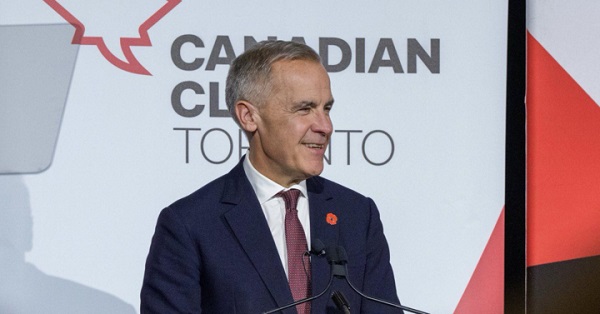
If you only listened to the mainstream media, you would think Justin Trudeau’s carbon tax is long gone. But the Liberal government’s latest budget actually doubled down on the industrial carbon tax.
While the consumer carbon tax may be paused, the industrial carbon tax punishes industry for “emitting” pollution. It’s only a matter of time before companies either pass the cost of the carbon tax to consumers or move to a country without a carbon tax.
Dan McTeague explains how Prime Minister Carney is doubling down on net zero scams.
-

 Health2 days ago
Health2 days agoLack of adequate health care pushing Canadians toward assisted suicide
-
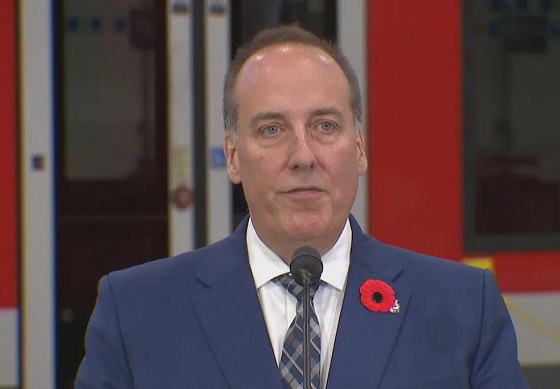
 National1 day ago
National1 day agoWatchdog Demands Answers as MP Chris d’Entremont Crosses Floor
-
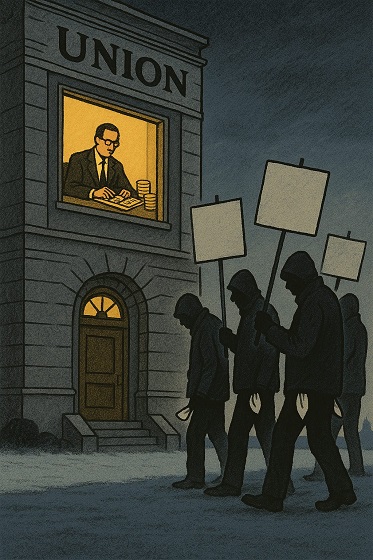
 Alberta1 day ago
Alberta1 day agoATA Collect $72 Million in Dues But Couldn’t Pay Striking Teachers a Dime
-
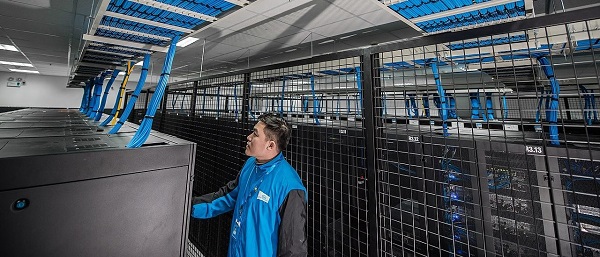
 Artificial Intelligence2 days ago
Artificial Intelligence2 days agoAI Faces Energy Problem With Only One Solution, Oil and Gas
-
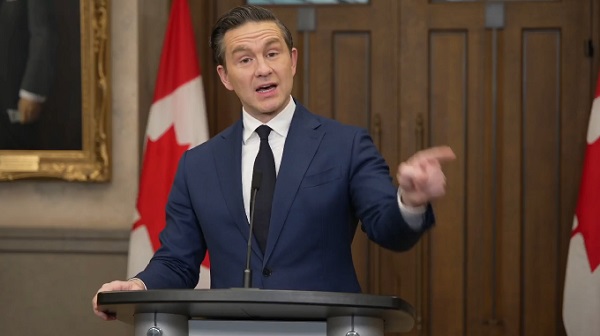
 Artificial Intelligence1 day ago
Artificial Intelligence1 day agoAI seems fairly impressed by Pierre Poilievre’s ability to communicate
-

 Business1 day ago
Business1 day agoLiberal’s green spending putting Canada on a road to ruin
-

 Alberta4 hours ago
Alberta4 hours agoCalgary mayor should retain ‘blanket rezoning’ for sake of Calgarian families
-

 Media1 day ago
Media1 day agoBreaking News: the public actually expects journalists to determine the truth of statements they report











